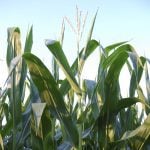
Relative humidity and leaf wetness impact tar spot growth
The southern Ontario situation in 2023 provided more insight on management strategies

Latest soybean series claims boost in more than yield
Growers in Canada will have limited access to varieties that offer better disease tolerances

How EU policies may affect domestic edible bean production
Latest round of trade-enabling moves must be monitored

Can your farm make do with one planter?
It is possible to grow longer rotations with one planter, but it’s a challenge

Differences revealed between old and new corn hybrids
Nutrient uptake, leaf architecture and planting densities examined

Crop spraying in Europe sees high scrutiny
A British sprayer operator highlighted differences in sprayer awareness between Canada and the U.K.

How important is water quality for spray applications?
It’s garnering more attention in a less forgiving world

Drift: The dreadful ‘D’ word in crop spraying
Herbicide drift can cause crop damage and have other repercussions

Breeding for plant plasticity
Epigenetics has immense potential for helping crops mitigate the effects of climate change

Growers discuss digital technologies they use on the farm, and why
Farmers agree is there is no single tool that is one-size-fits-all

